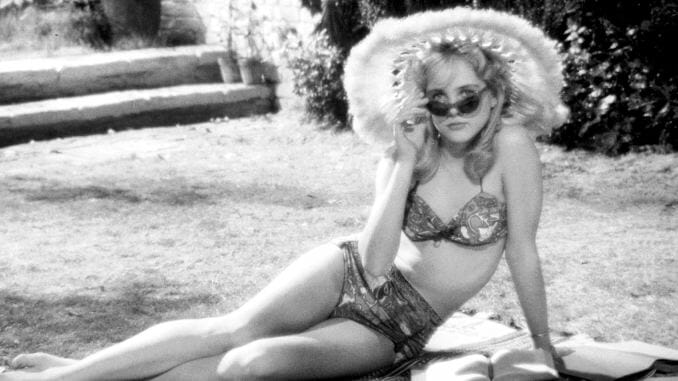Stanley Kubrick’s Lolita at 60: Adapting the Unadaptable

When Vladimir Nabokov set out to write Lolita, one of literature’s greatest scandals and greatest masterpieces, he did so as something of a personal challenge. How, he asked, can you take the most monstrous subject possible and make him sympathetic? In Nabokov’s 1955 novel, the monster in question is British intellectual Humbert Humbert, a middle-aged man who falls “in love” with, and kidnaps, twelve-year-old Dolores (or, as he dotingly nicknames her, Lolita). Unsurprisingly, when it came out, Lolita was a bit of a tough sell. Though some critics recognized it as an expertly crafted masterpiece that probes an impossibly delicate subject with grace and thoughtfulness, many were quick to brand it as vulgar and morally corrupt. Sunday Express editor John Gordon called it “the filthiest book I have ever read,” and “sheer unrestrained pornography.”
Based on its distressing subject matter and grieved reviews, Lolita was always going to be a near-impossible Hollywood adaptation. Stay too true to the page and you run the risk of being accused of depicting child pornography; Nabokov’s more scandalous scenes are much more difficult to maneuver when you’re faced with flesh and blood rather than words on a page. But stray too far from the source material, and you lose what is so special about it: The dangerously convincing, even likable, voice of the narrator; the role of the reader/viewer as a member of a jury; the peculiar past that might explain committing such atrocities. Lose those, and you lose the fundamental point of Lolita—that is, losing yourself in the horrifying ethical void of it all.
But if anyone was up for the challenge, it was Stanley Kubrick, who never once recoiled from a weighty thematic challenge. Just look at the convoluted question of war in Paths of Glory and Spartacus, the bomb in Dr. Strangelove a few years later, and his late-career brush with sexual deviance in Eyes Wide Shut. So when Nabokov moved to Hollywood in the early 1960s and wrote a long, detailed and faithful adaptation of his novel, Kubrick seemed to be the only man for the job.
But remember, we’re talking about Hollywood in the 1960s: Censors watched over productions like hawks, and promptly shut down what they deemed gratuitous sexual content and foul language. Unsurprisingly, Kubrick and producer James B. Harris were encouraged to rewrite the whole thing. This included making Dolores (played by Sue Lyon) 14 instead of 12, eradicating any sexual scene between her and Humbert and relinquishing any mention of Humbert’s formative past. The resulting film possesses a radically different message and tone than its source. A novel about a middle-aged man’s attempt to justify his sexual relationship with a 12-year-old was mutated by censors into something entirely different. Kubrick’s Lolita is, on its most surface level, about a likable man who has a crush on, then a (possibly sexual) relationship with, a teenager. Not that Humbert is exactly morally acquitted in the 1962 film, but foregoing the nitty-gritty of it all inevitably turns it into a very different story.
-

-

-

-

-

-

-

-

-

-

-

-

-

-

-

-

-

-

-

-

-

-

-

-

-

-

-

-

-

-

-

-

-

-

-

-

-

-

-

-








































